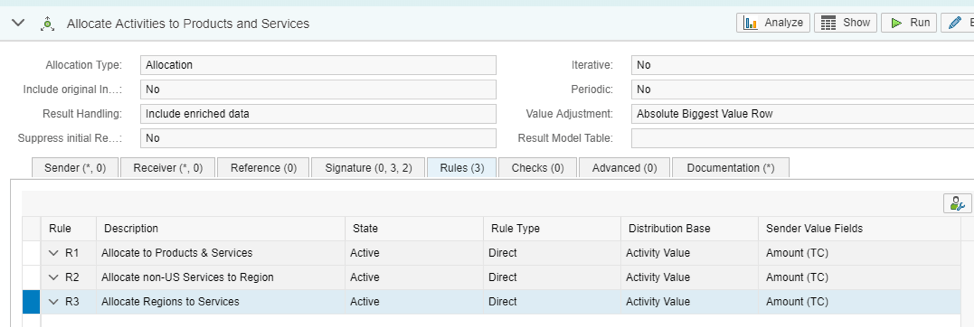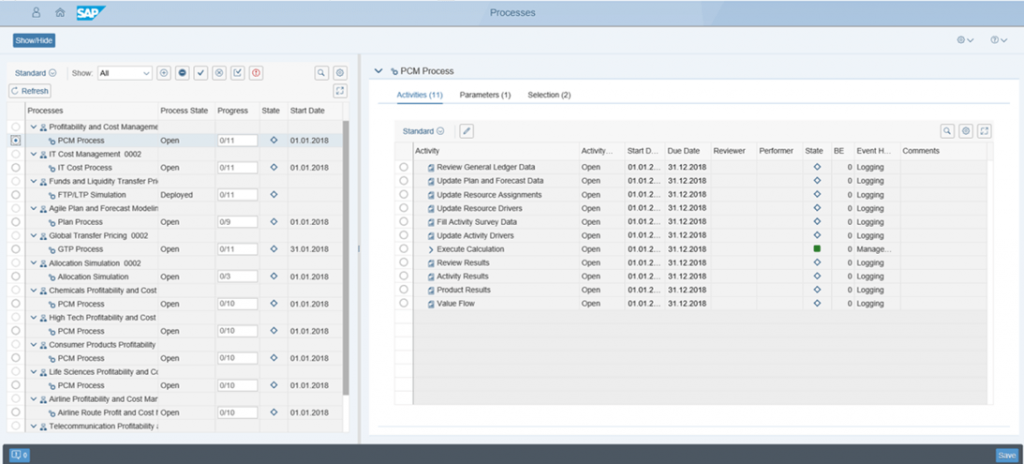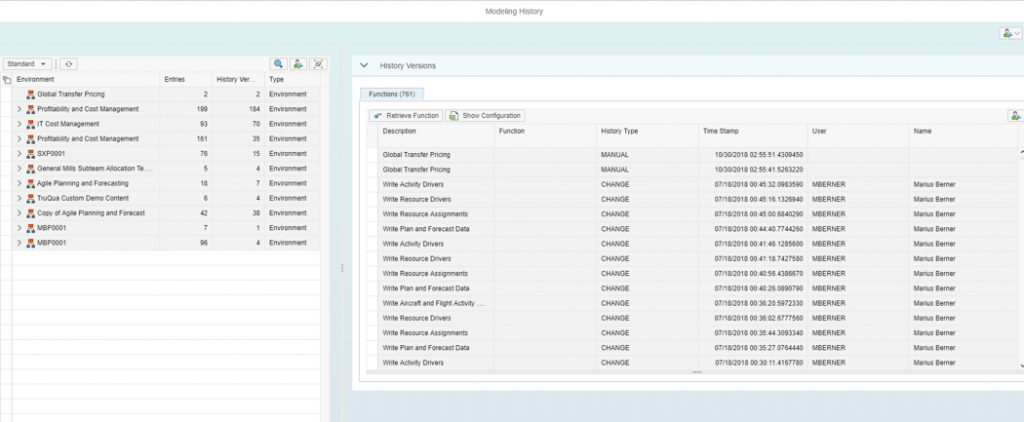SAP Profitability and Performance Management Solution (PaPM) | Top 5 Things You Need to Know Now
SAP Profitability and Performance Management Solution (PaPM) | Top 5 Things You Need to Know Now
For those who are unfamiliar with the terminology, PaPM is SAP’s rebranding of the Performance Management for Financial Services solution (previously known as FS-PER.) FS-PER was initially developed with a focus on the Financial Services industry and it delivered many functions out-of-the-box for funds transfer pricing, insurance valuations, and integration with SAP’s Finance and Risk Data Platform. However, the tool now has been refocused to serve a broader range of verticals outside of the financial services industry.
SAP Profitability and Performance Management provides a new generation of integrated performance management applications that can leverage existing data and information models from other SAP and non-SAP applications in the cloud or on-premise without the need to create additional data models.
Built on top of SAP HANA’s in-memory platform and leveraging the user experience principles of SAP Fiori, it is designed to run simply and comfortably for business users and provide real-time insights through guided configuration of business rules, the ability to quickly process large volumes of data, and the use of flexible simulation parameters.
In our previous post, we outlined five key features of FS-PER:
- Role-based user environments
- Built-in functions to read live data from database tables, views, and other applications
- A powerful, native HANA calculation engine for rapid processing of intensive allocation and calculation rules
- Flexible parameter sets for simulation and “what if” scenarios
- Built-in integration functions to write data back to HANA tables, BW InfoProviders, and SAP Analytics Cloud
These features are still very much part of the rebranded PaPM solution; however, SAP has also delivered new capabilities designed to frame the tool as a broadly applicable profitability allocation and performance management tool that can be leveraged in any industry (not just Financial Services).
Rich New Sample Business Content
Back when the solution was known as FS-PER, most of the sample business content that SAP delivered was primarily focused around scenarios for banking and insurance, such as funds transfer pricing and solvency management. However, in PaPM, the content base is expanded to focus on needs within other industries, such as:
- Retail
- Automotive
- Mining
- Engineering and Construction Operations
- Industrial Machinery and Components
- Transportation and Logistics
- Consumer Products
- Life Sciences
- Healthcare
- Utilities
- Oil and Gas
- Public Sector
- Telecom
The content is designed to provide ideas and best practices for how to model scenarios in these different industries. Usage scenarios include:
- Profitability and cost management and analysis by customer, product, channel, and route
- Management of IT costs using standardized technology business management activity-based costing rules
- Assessments and distributions of G/L level data using iterative allocation rules with traceability back to the original cost center/cost element
- Agile planning and forecasting through driver-based predictive and deep learning models
- Supply chain and overhead optimization scenarios
- Product/service/branch costing and pricing scenarios
- Shared services costing scenarios
This content comes prepackaged and can be deployed and customized to fit a customer’s specific needs and achieve fast time-to-value when building complex cost and revenue allocation models to create the data foundation for flexible, high-speed profitability analysis.
New Cloud Capabilities
In addition to the delivery of new content, PaPM is now available for cloud deployment:
- The SAP HANA platform that supports SAP Profitability and Performance Management can be deployed on-premise for maximum control.
- It can also be delivered from the cloud for fast time-to-value, or through a hybrid model that supports a variety of deployment scenarios.
Deployment Options
 PaPM also allows easy integration with SAP Analytics Cloud and the Digital Boardroom by reusing the capabilities of SAP HANA and BW to support both live and imported data connections.
PaPM also allows easy integration with SAP Analytics Cloud and the Digital Boardroom by reusing the capabilities of SAP HANA and BW to support both live and imported data connections.
- Allocations/calculation functions created in PaPM’s Fiori interfaces automatically generate Calculation Views in the native HANA database the tool is run on; SAP Analytics Cloud can connect directly to these views to obtain live access to the calculation results.
- PaPM can also write the calculations back to BW or post the data back to FI-CO tables in ERP or S/4HANA; SAP Analytics Cloud can then connect to these results through InfoProviders or CDS views.
This connectivity allows additional planning and analytics to be performed on the detailed results of the cost and revenue allocation models.
Enhanced Allocation Functionalities
In PaPM, the Allocation function is used to model a range of allocations, assessments and top-down distributions, including step-down and iterative cycles. The core of the tool’s powerful use cases in profitability and performance management applications stems from the ability to leverage this function type to flexibly define detailed allocation scenarios that can be created with little to no coding, and it can execute on large numbers of records in seconds through the HANA calculation engine.
The capabilities of this function type are enhanced from previous versions. One such enhancement is the ability to include multiple rules (also referred to as allocation segments) using different filters and distribution bases within a single function, making it easier to maintain large environments.

In addition, integration has been enhanced to allow synchronization with existing allocation configurations in an ERP or S/4HANA system. For the most common rule types, the Allocation function now allows you to carry out replication of existing allocation cycles using the new “FI-CO Allocation” allocation type.

The controlling area and the allocation cycle can be selected from the source system, and then the “Sync” button can be used to replicate the cycle configuration with all its segments into the Allocation function, where the modeling user can then continue with further manual configuration (for example, sender and receiver input settings). That way, existing SAP allocation rules can be easily utilized in a Profitability and Performance Management application.
New Flow Modeling Function
As of SP01, PaPM has also introduced a new “Flow Modeling” function type, which can be used to produce a best estimate cash flow using a variety of rule types delivered by SAP to provide encapsulated, reusable logic for flow calculations.

Source: TruQua, Internal Systems
In this type of modeling, users will typically leverage one of the delivered calculation types and input various market and economic indicators are such as interest rates, currency rates, inflation rates, and growth rates. Based on the inputs and the type of calculation chosen, PaPM will then output a best estimate cash flow (BECF) to attempt and describe the most likely future outcome.
The different types of BECF rules that can be leveraged for modeling can be found in the SAP Help page for the Flow Modeling function type:
New Process Flow and Audit Capabilities
Finally, PaPM has delivered some additional technical-oriented developments in past releases to complement the new business functionality and sample content. One of these new features is the ability to create, deploy, execute, and monitor Processes (a functionality common to many SAP planning solutions.)

The inclusion of this functionality allows users to create guided task lists with deadlines to help assign key tasks in a process to different users and to track the progress of completing that process overall.
In addition to basic process flow capabilities, there are also new auditing capabilities to trace the changes made to models in a PaPM environment.

Once an environment is selected, a detailed list of all changes to the environment, functions, and fields are displayed on the right-hand side of the screen. It is also possible to restore older versions of an environment, function or field.
By rebranding FS-PER as Profitability and Performance Management (PaPM), SAP is making an effort to expand the target audience of the solution outside of organizations in the financial services industry, and now presenting it as a generic profitability allocation and analysis tool that can be leveraged by companies in more verticals.
To further this effort, SAP has developed a lot of powerful sample content, covering a multitude of different industry use cases. SAP has also further developed the tool’s integration capabilities with other solutions such as S/4HANA and SAP Analytics Cloud, allowing it to easily plug into a variety of planning and analytics scenarios.
This integration has been primarily achieved by enhancing the built-in function types in PaPM, while still keeping them user-friendly enough that they can be executed without heavy coding or IT involvement.
For organizations looking to build powerful performance management applications that can be configured quickly and integrated into their existing landscapes, PaPM is a powerful option for achieving this.
For more information about PaPM and how it can help your business, fill out the form below and we will contact you soon.
*Post based off information as of version 3.0 SP02
